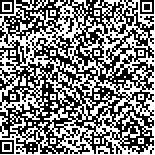下载中心
优秀审稿专家
优秀论文
相关链接
首页 > , Vol. , Issue () : -
摘要

深入了解作物在不同生长阶段的需水规律及其时空差异对制定合理的灌溉方案和提高水资源利用效率等具有重要意义。本研究基于高时空分辨率的遥感蒸散发和作物物候数据,针对中国的三大粮食作物——玉米、水稻和小麦,开展了不同农业区、不同时间尺度以及不同物候期的蒸散耗水特征研究,分析了2001~2019年中国三大粮食作物的蒸散发耗水变化规律。研究结果表明:在中国的三大粮食作物种植区,年蒸散耗水量呈现由南向北逐渐减少趋势,灌溉显著增加地表蒸散发,在依赖灌溉的北方干旱半干旱区、黄淮海平原区以及黄土高原区,年蒸散量超过降水量。2001~2019年,大部分种植区的年蒸散耗水量呈现增加趋势,北方增速明显高于南方,蒸散耗水量的年内变化时空变异在冬季比夏季更显著。玉米和水稻在生长季蒸散耗水量总体大于小麦,单季稻生长季蒸散耗水量大于早稻和晚稻,春小麦大于冬小麦。玉米生长季蒸散耗水量的年际增速大于小麦和水稻,作物单个生长季的蒸散耗水量占年总量的比例在北方高于南方。三大粮食作物在关键物候期的日蒸散耗水量差异显著,玉米在抽穗期的日蒸散耗水量明显高于三叶期和成熟期;小麦在抽穗期和成熟期的日蒸散耗水量总体相当,高于返青期或出苗期;早稻在抽秧期、抽穗期、成熟期的日蒸散耗水量呈逐渐增加趋势,而晚稻呈相反趋势;单季稻在抽穗期的日蒸散耗水量最大,其次是插秧期。尽管蒸散发与物候的遥感监测存在一定的不确定性,但遥感对于大区域范围作物生长阶段的蒸散耗水监测具有显著优势,可为制定更加精准的灌溉方案、种植制度等提供科学依据,在保证国家粮食安全同时,更加有效地保护和利用水资源。
Water is a key factor influencing crop growth. Crops consume water primarily through transpiration, which is a crucial process of plant growth. With increasing drought risk, accurately estimating crop water consumption is of utmost importance, especially in areas where water resources are scarce and agriculture dominates the economy. Understanding the water requirements of crops at different growth stages and spatial-temporal scales is crucial for developing efficient irrigation strategies and improving water resource utilization. Evapotranspiration is the primary way of crop water consumption. This study employed remote sensing-derived evapotranspiration and crop phenology data, with high spatial and temporal resolution and high accuracy, to analyze the evapotranspiration water consumption characteristics of three staple crops (maize, rice, and wheat) in nine agricultural regions of China. The analysis focused on different time scales, including the yearly scale, growth seasons, phenological dates, and changes from 2001 to 2019. The findings revealed that the yearly evapotranspiration water consumption in the planting regions of the three crops gradually decreased from south to north. Irrigation significantly increased surface evapotranspiration, and evapotranspiration exceeded precipitation in arid and semi-arid areas, such as the Huang-Huai-Hai Plain and the Loess Plateau. From 2001 to 2019, yearly evapotranspiration water consumption in most crop planting areas experienced an increasing trend, with a significantly higher increasing rate in the north compared to the south. The spatial and temporal variability of evapotranspiration water consumption in winter was more pronounced than in summer. Maize and rice exhibited higher evapotranspiration water consumption during the growing season than wheat. Single rice exhibited higher evapotranspiration compared to early and late rice, while spring wheat had higher evapotranspiration than winter wheat. The increase rate in evapotranspiration water consumption during the growing seasons of maize was more pronounced than that of wheat and rice. The proportion of evapotranspiration water consumption during a single growing season to the whole year was greater in the north than in the south. Daily evapotranspiration water consumption among the three staple crops showed significant differences at key phonological dates. Maize consumed more water during the heading stage than at the V3 and maturity stages. There is a similar daily water consumption at the heading and maturity stages for wheat, higher than that at the green-up or emergence stages. Daily evapotranspiration water consumption of early rice increased gradually at the transplanting, heading, and maturity stages, but the opposite trend for late rice. Single-rice had the highest daily evapotranspiration at the heading stage, followed by the transplanting stage. Despite the inherent uncertainties associated with remote sensing-based evapotranspiration and phenology, the advantages of remote sensing in monitoring evapotranspiration water consumption over large areas are noteworthy. This information on crop water consumption can provide a scientific foundation for devising more precise irrigation strategies and planting systems, ultimately contributing to food security and effective water resource management.

